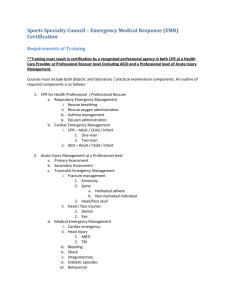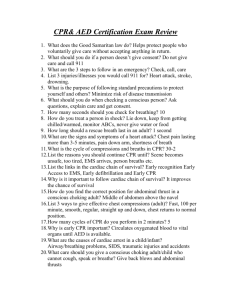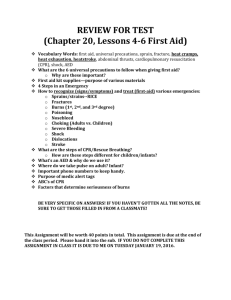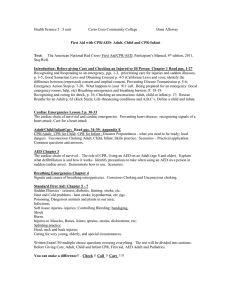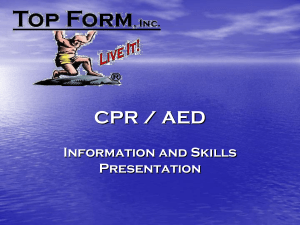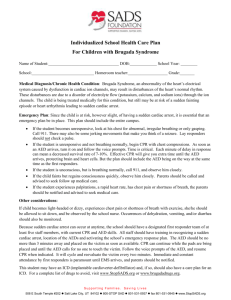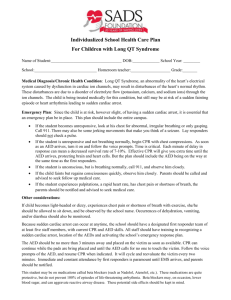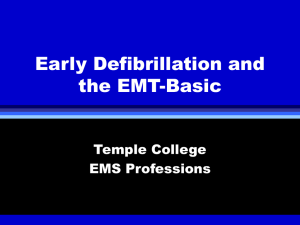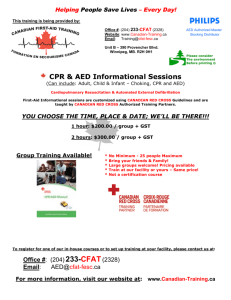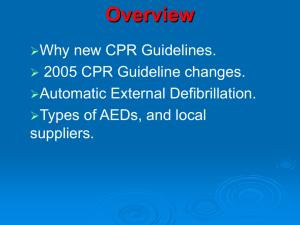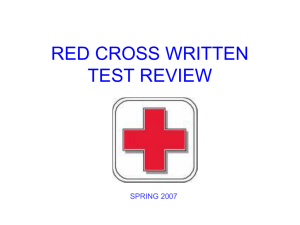Adult CPR/AED Study Guide
advertisement
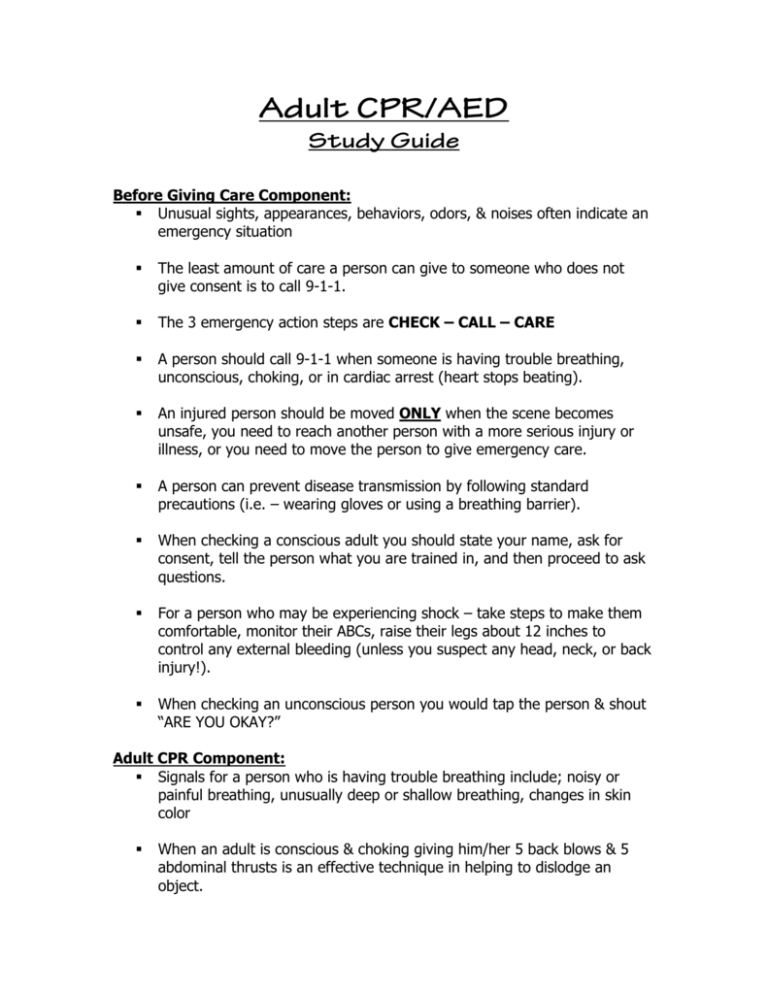
Adult CPR/AED Study Guide Before Giving Care Component: Unusual sights, appearances, behaviors, odors, & noises often indicate an emergency situation The least amount of care a person can give to someone who does not give consent is to call 9-1-1. The 3 emergency action steps are CHECK – CALL – CARE A person should call 9-1-1 when someone is having trouble breathing, unconscious, choking, or in cardiac arrest (heart stops beating). An injured person should be moved ONLY when the scene becomes unsafe, you need to reach another person with a more serious injury or illness, or you need to move the person to give emergency care. A person can prevent disease transmission by following standard precautions (i.e. – wearing gloves or using a breathing barrier). When checking a conscious adult you should state your name, ask for consent, tell the person what you are trained in, and then proceed to ask questions. For a person who may be experiencing shock – take steps to make them comfortable, monitor their ABCs, raise their legs about 12 inches to control any external bleeding (unless you suspect any head, neck, or back injury!). When checking an unconscious person you would tap the person & shout “ARE YOU OKAY?” Adult CPR Component: Signals for a person who is having trouble breathing include; noisy or painful breathing, unusually deep or shallow breathing, changes in skin color When an adult is conscious & choking giving him/her 5 back blows & 5 abdominal thrusts is an effective technique in helping to dislodge an object. We check for signs of life for no more than 10 seconds. Rescue breaths for an adult should last about 1 second The most common signal of a heart attack is persistent chest pain or discomfort that lasts for 3 to 5 minutes 2 minutes of CPR for an adult is about 5 cycles of CPR. For adult CPR 1 cycle is 30 compressions & 2 rescue breaths. CPR should not be stopped or interrupted until an AED is ready to be used, another trained responder takes over, you see signs of life, you are too exhausted to continue, or the scene becomes unsafe. Early CPR is an important step in the cardiac chain of survival because it helps to circulate oxygenated blood to the vital organs until an AED is ready to be used or EMT arrives. Adult AED Component: Each minute that defibrillation is delayed reduces the chance of survival by about 10%. Early defibrillation is another step in the cardiac chain of survival that can potentially save the life of someone in cardiac arrest. Defibrillation is an electric shock that may help the heart resume an effective rhythm. During the second analysis, if the AED prompts “no shock advised,” you should continue with 2 minutes of CPR. Be sure that everyone stands clear & does not touch the person when the AED is analyzing or advising a shock. If you see a medication patch on the person’s chest before you apply the pads, remove patch with a gloved hand. The AED pads for an adult should be placed on the upper right chest & the lower left side of the chest. Once the pads have been attached allow the AED to analyze the heart rhythm.
